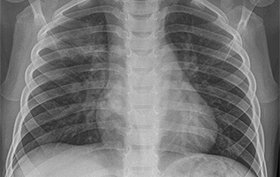THE CASE The patient, a 53-year-old man, presented with acute back pain after a fall. View the image taken (Figure 1) and consider what your diagnosis would be.
Read MoreObamaCare Update or Fear and Loathing: The Affordable Care Act
JOHN SHUFELDT, MD, JD, MBA, FACEP In the conclusion of my October 2012 column on ObamaCare I wrote that no matter the outcome (of the presidential election) our future will not be boring. Fourteen months later, it has not been boring and we are just around the corner from imposing the individual mandate (aka tax penalty) on those who don’t have minimal insurance coverage. However, before we cross the starting line let’s review a bit …
Read More
Dilute Proparacaine
Urgent message: The use of dilute proparacaine appears to be a safe and cost-effective way to treat the pain associated with many acute corneal injuries. JACQUALINE DANCY, PA-C, MPAS Editor’s Note: This article deviates from our typical case report format to underscore one of the key points for management of eye conditions discussed in this month’s cover story. Introduction Ocular injuries are often painful and can cause significant suffering. Many medical practitioners provide immediate, but …
Read More
Identifying Risks and Finding Shelter in an Urgent Care Compliance Program
Urgent message: The escalating pressure on the industry to decrease health care costs has resulted in an increase in audit activity from government and private payors for everything from billing and coding to HIPAA and kickbacks. Therefore, it’s more important than ever for urgent care centers to build a culture of compliance. DAMARIS L. MEDINA The health care industry is in the throes of a dynamic regulatory enforcement climate. Federal and state regulators and third-party …
Read More
Management of Ocular Complaints in Urgent Care: Part 1
Urgent message: Triage of eye conditions in urgent care to ensure the best patient outcome requires knowing what equipment to use and understanding when to refer to an ophthalmologist. Always remember to document acuity of vision in all patients presenting with an eye complaint. SARVOTHAM KINI, MD Introduction Ocular complaints are extremely common in the urgent care setting. Yet the capacity of individual urgent care centers to provide high quality eye care is variable. The …
Read MoreWhere Do We Go From Here?
Lee A. Resnick, MD, FAAFP As I was writing this column about visioning for the new year in urgent care, I couldn’t help but think of the Alan Parsons Project tune, “Where Do We Go From Here?” Opportunity abounds but risk remains, and there are gaps, so we must not pursue opportunity blindly. Consider the following: Urgent Care Achievements Strong organized medicine representative (UCA and its branches) Proven, stable trade association (UCA) Conferences Education Vendor …
Read More
January 2014

3-year-old boy with a cough and fever
This x-ray was taken on a 3-year-old boy with a cough and fever. View the image taken (Figure 1) and consider what your diagnosis would be.
Read MoreDiabetes Mellitus: Current Diagnosis, Screening and Management Issues in Urgent Care
Urgent Message: Diabetes mellitus is a common, complex and important condition frequently encountered in the urgent care setting. This article reviews current diagnostic criteria for diabetes and prediabetes and types of diabetes and discusses issues related to screening for diabetes and management issues relevant to urgent care. The authors previously reviewed the management of acute hyperglycemia in the July/August 2012 issue of JUCM. Author: Anthony J. Pick, MD, CDE and David L. Pick, MD, FAAFP …
Read MoreDeveloping Data: December, 2013
These data from the 2012 Urgent Care Industry Benchmarking Study are based on a sample of 1,732 urgent care centers; 95.2% of the respondents were UCA members. Among other criteria, the study was limited to centers that have a licensed provider onsite at all times; have two or more exam rooms; typically are open 7 days/week, 4 hours/day, at least 3,000 hours/year; and treat patients of all ages (unless specifically a pediatric urgent care). In …
Read More